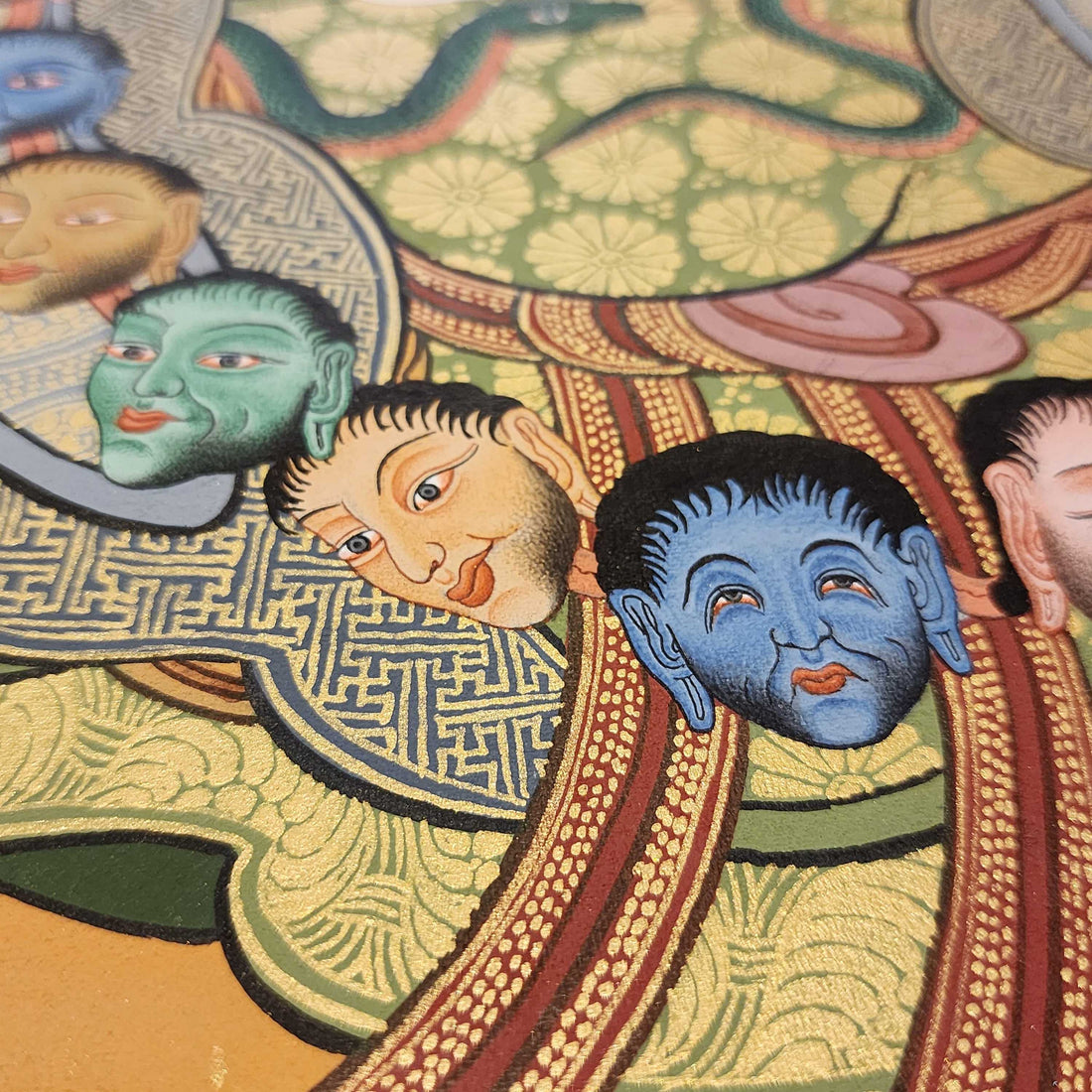
Color Symbolism in Thangka Art: Spiritual Meanings Behind Sacred Hues
Share
Introduction
In Tibetan Thangka art, colors are far more than decoration. They are a spiritual language. Each shade carries profound meaning, guiding meditation and representing divine qualities. Understanding color symbolism allows collectors and practitioners to connect deeply with their Thangkas.
White – Purity & Wisdom
Represents spiritual purity, truth, and clarity of mind. Often associated with deities like White Tara, who embodies longevity and compassion.
Blue – Protection & Compassion
Symbolizes vastness like the sky and ocean, representing wisdom and healing. Deities like Medicine Buddha are often depicted in deep blue hues.
Red – Power & Passion
Represents fire, transformation, and vitality. It is linked to deities that embody strength and dynamic energy, such as Hayagriva.
Green – Balance & Growth
Associated with nature, harmony, and active compassion. Green Tara embodies this color, symbolizing swift action to protect and help beings.
Yellow/Gold – Prosperity & Enlightenment
Represents wealth, abundance, and the highest spiritual attainment. Gold accents in Thangkas are often used to depict enlightened beings like Buddha Shakyamuni.
Why Color Symbolism Matters
Understanding color meanings helps practitioners choose Thangkas that align with their spiritual goals. Whether for healing, wisdom, protection, or compassion. It also deepens the appreciation of the art beyond its aesthetic beauty.
Conclusion
Every color in a Thangka carries a message from the Buddhist tradition, guiding meditation and inspiring transformation. These sacred hues bring the spiritual world vividly to life.
